What an Early Drive of the 2023 Nissan Ariya EV Reveals
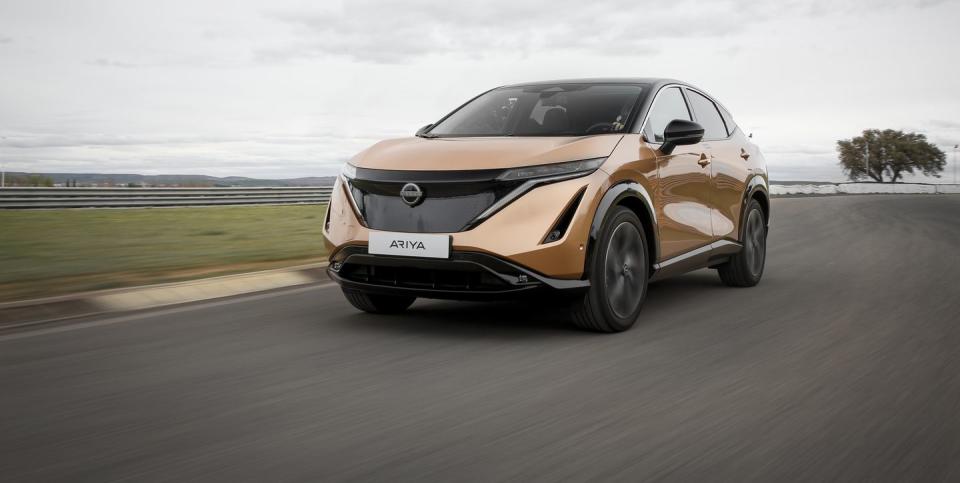
The Nissan Ariya will be on sale by the end of the year, with both front- and all-wheel-drive versions offered.
Nissan is targeting up to 300 miles of range for the bigger battery pack.
Prices will run from $47,125 to $60,125.
For much of the last decade, Nissan led the way on electrification. After its launch in 2010, the Leaf hatchback quickly became the world’s best-selling EV, a title it held for most of its life; across two generations sales are close to 600,000 units.
Then the Tesla Model 3 came along, passing the Leaf’s total volume within a couple of years, and now—although exact figures are unavailable—is certainly beyond a million cars delivered worldwide. EV buyers are clearly prioritizing performance and design, two qualities that come up short for the aged Leaf.
The new Ariya is meant to fill these voids. Already on sale in Japan, set to reach Europe soon and coming to the US by the fall, the Ariya EV crossover will be priced from $47,125 to $60,125. And while we wait a while longer to experience it properly, Autoweek has managed to drive a European-spec version, albeit only on the unlikely environment of the Jarama race track near Madrid.
You won’t be surprised to hear the front-wheel-drive Ariya is not ideally suited for this 2.3-mile circuit—the place Gilles Villeneuve took has last-ever grand prix win in 1981. The SUV struggles to both turn its 4300-lb mass and find traction through two wheels in tighter turns. Don’t expect many people to buy them as track rats, but there were reasons to be optimistic as to how it will deal with the real world.
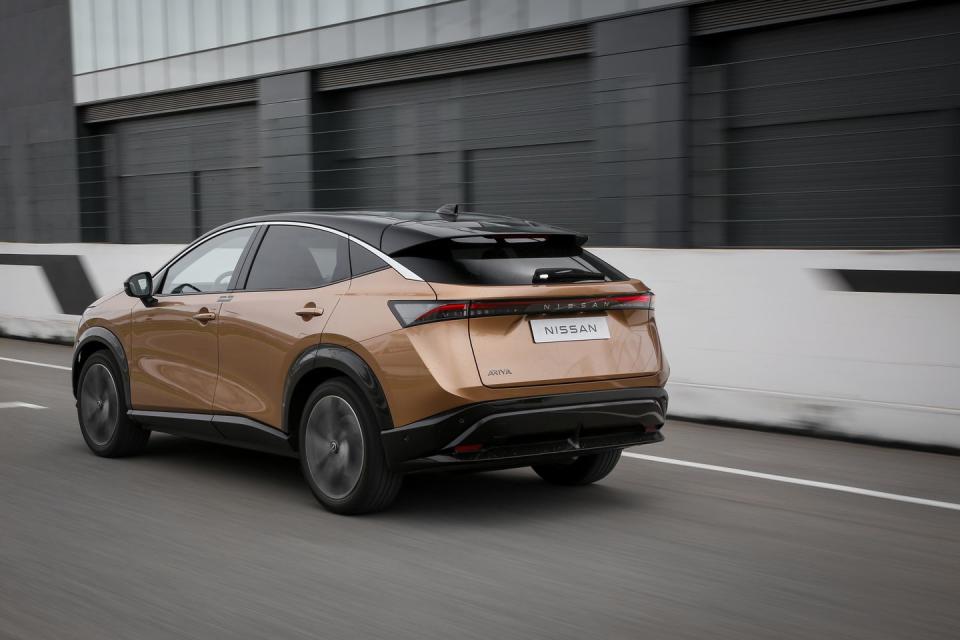
Sitting on the all-new CMF-EV electric platform, the Ariya uses advanced new externally excited eight-pole liquid cooled motors, these being both compact and extremely light. The base version has a single 238-hp motor turning its front axle, while the all-wheel driver will feature another at the rear, boosting output to up to 389 hp. The all-wheel-drive version will also get Nissan’s clever e4ORCE system, which can adjust the torque going to each axle all the way from 0 to 100%, but also to counter squat and dive by adjusting power delivery and brake regeneration.
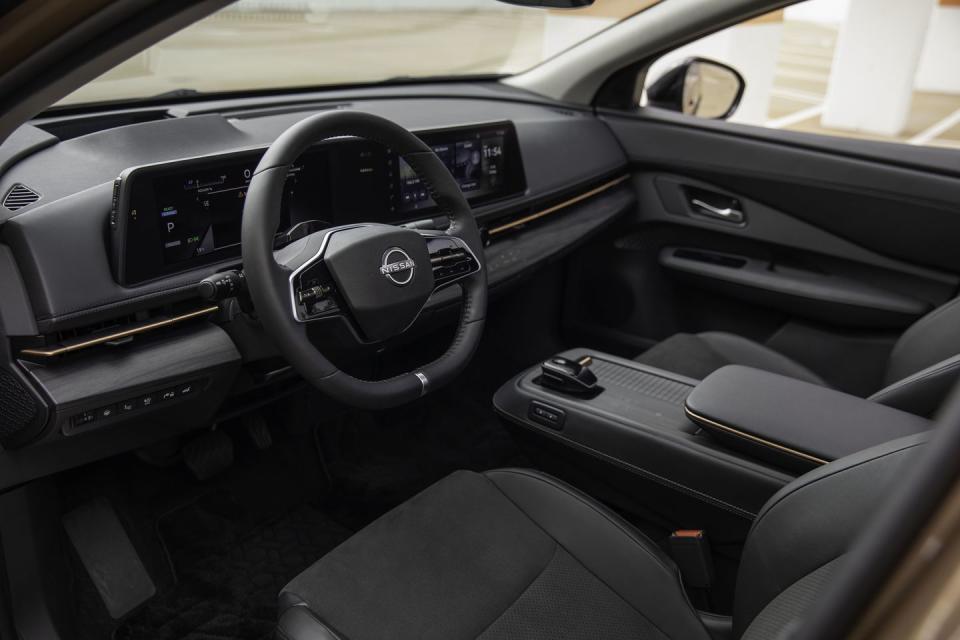
Two battery sizes will also be available from launch, an entry level 63-kWh pack and a larger one with 87 kWh of usable capacity. Nissan hasn’t posted EPA numbers yet but says it hopes the bigger pack will deliver at least 300 miles; on the less strict WLTP testing protocol in Europe, the front-drive 63-kWh Ariya has an official range of 250 miles. Both batteries support DC fast charging at speeds of up to 130 kW.
Jarama quickly proved the front-drive Ariya doesn’t feel particularly fast. Initial acceleration is keen but tails off rapidly as speeds rise, and Nissan’s claimed 7.2-second 0-60 mph time is nothing to boast about for a modern EV. Most of Jarama’s straights had been broken up with artificial chicanes and cone-marked obstacles to slow terminal speeds, but even without these I suspect the Ariya would have struggled to prove the presence of the 100-mph speed limiter Nissan says European versions carry.
Suspension is soft, but not excessively so. Nissan says there are no plans to offer adaptive dampers on any version of the Ariya, with pliant passive settings chosen for comfort. Despite lots of body roll under harder cornering loads, the Ariya’s dampers ably handle sudden directional changes and deal with small doses of the circuit’s ridged apex curbing.
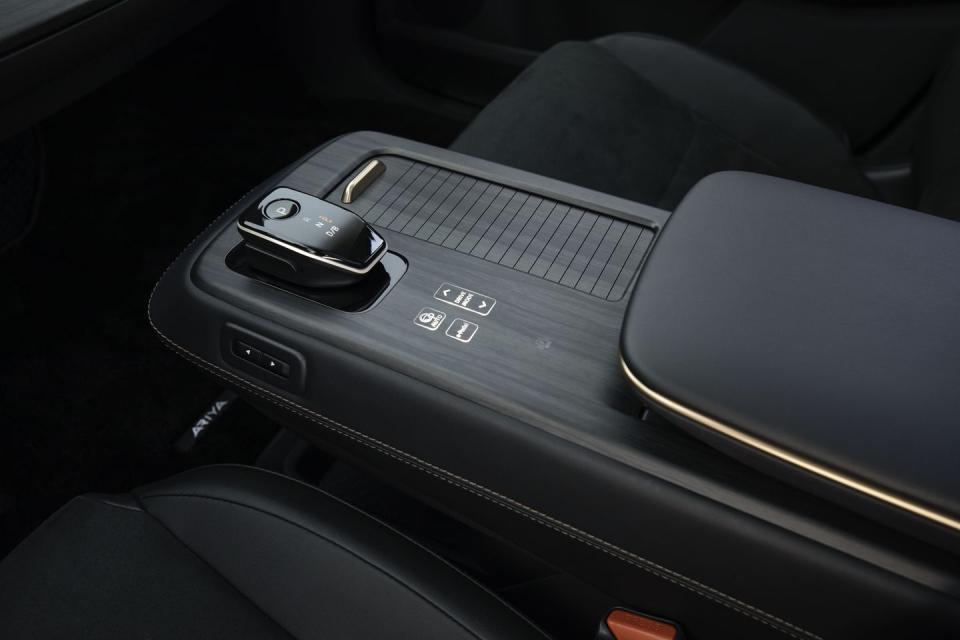
Steering feels properly weighted, and the Ariya blends its regenerative and friction retardation seamlessly and with solid, naturally progressive brakes. It also offers a high regeneration e-pedal function, although this still requires positive brake input to bring the car to a final stop.
The Ariya beats the Leaf hands down on the design front, with much more visual presence. Up close, it looks bigger than it actually is. A 182.9-inch length is just 0.2 inches longer than a Toyota RAV4, but the cab forward proportions allowed by the lack of a sizable combustion engine up front means the windscreen base sits almost directly above the front axle line.
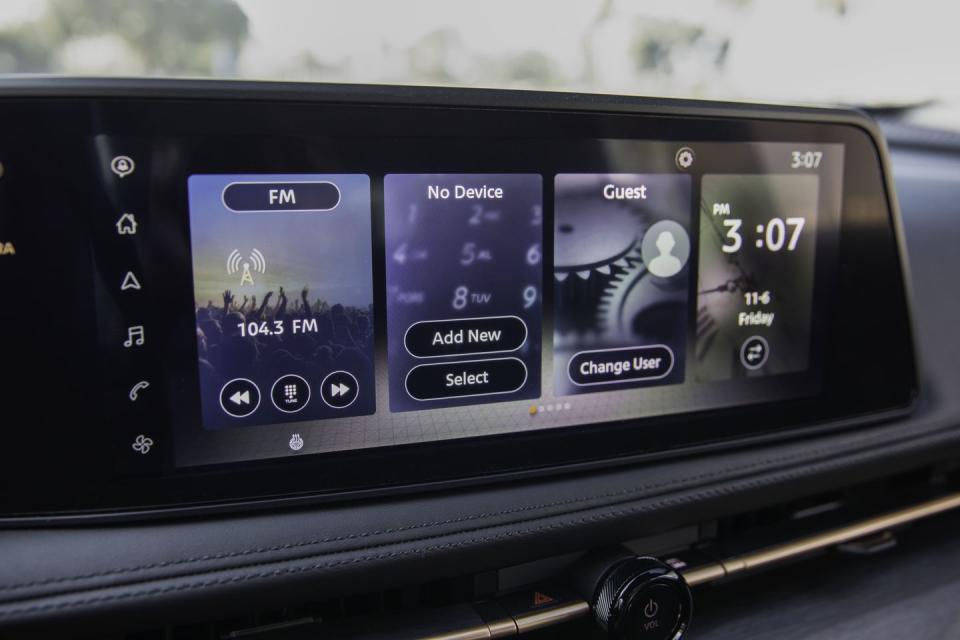
The grille looks enormous, although only a small amount of it is actually used for cooling and features Nissan’s new "kumiko" interlocking pattern inspired by Japanese woodworking techniques. But the Leaf’s blocky styling has been replaced by a far more muscular design language; it is a handsome, distinctive car in the flesh.

The cabin is equally impressive with a minimalist ethos that feels much more deliberate than the Volkswagen ID.4’s austere lack of switchgear. It is well finished and spacious with enough room for adults to sit behind each other front and rear. The dashboard has twin adjacent 12.3-inch displays, one for instrumentation and one for infotainment.
Although Nissan has joined the trend to cull most conventional buttons, it has kept separate heating and ventilation controls through clearly marked touch-sensitive areas on the wood-effect dashboard. These have a satisfying amount of haptic resistance to indicate their operation and seem to work well.
There’s an electrically powered storage compartment under the dash which motors out in response to another haptic panel. We’re also promised the enhanced ProPILOT 2.0 cruise system allowing limited hands-off operation, but it wasn’t possible to test this in Spain.
No question, the Ariya is a huge leap forward from the dowdy Leaf. On first impressions, however, it doesn’t feel like it will offer a sizable step beyond any of its major rivals in what is turning into a hard-fought part of the EV market. The established auto industry’s wait for an anti-Tesla seems set to continue for a while longer.
Share your thoughts on the Ariya and Nissan’s track record with EVs in the comments below.

 Yahoo Autos
Yahoo Autos 